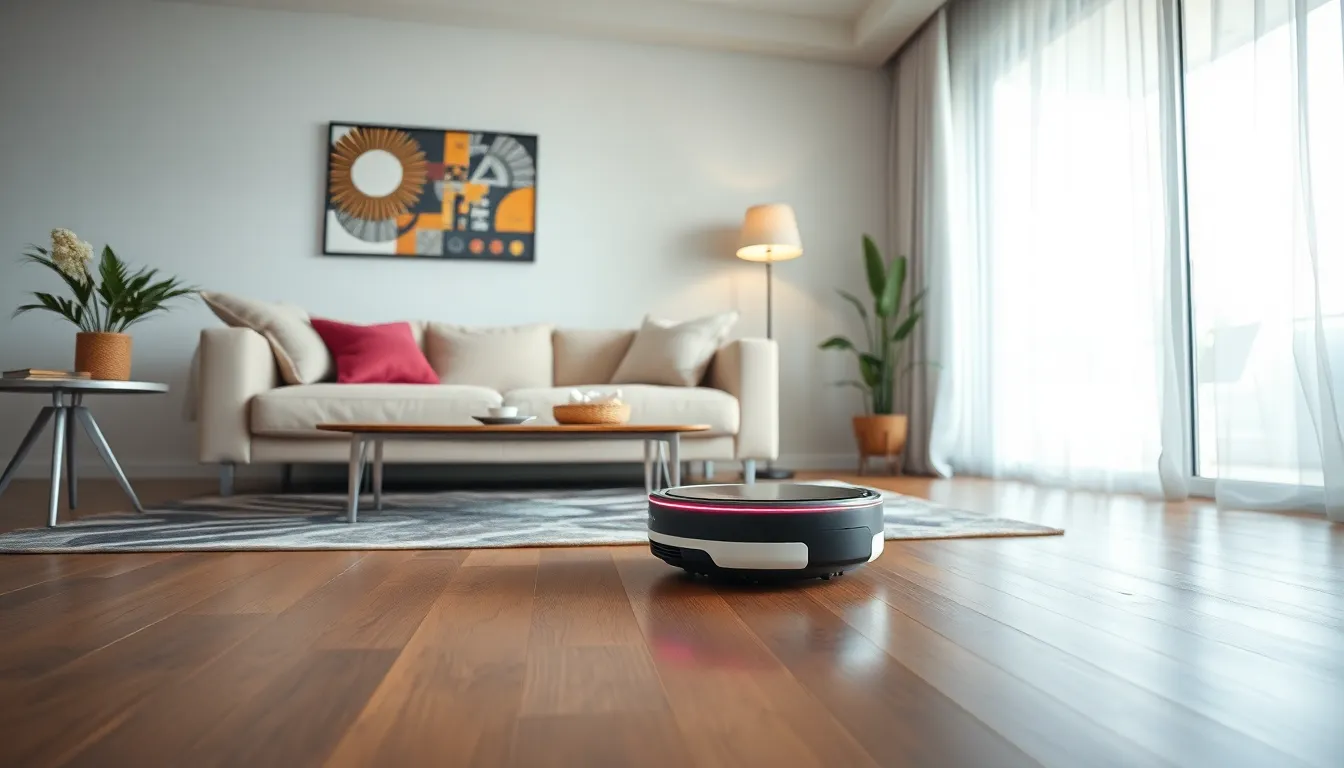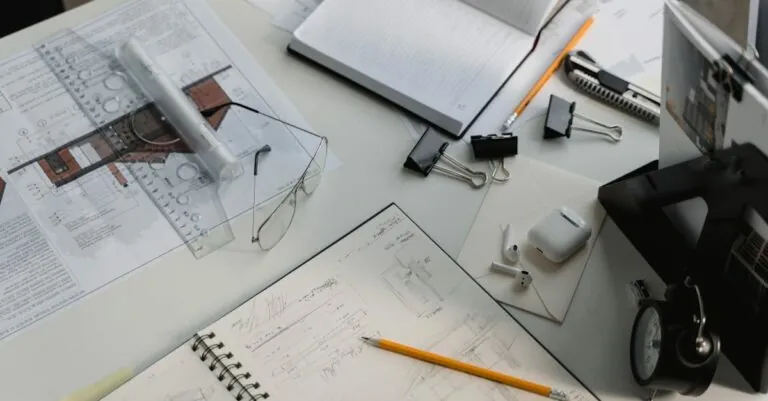Table of Contents
ToggleIn a world where robots are no longer just the stuff of science fiction, they’re stepping into our daily lives faster than you can say “Robo-helper.” From vacuuming the floor to managing your schedule, these mechanical marvels are here to save the day—and maybe even your sanity. Imagine a life where chores are tackled by a friendly robot while you kick back with a cup of coffee. Sounds like a dream, right?
Overview Of Robotics In Daily Tasks
Robotics increasingly shapes daily life, moving beyond theory to practical applications. Many people now encounter robots in various forms, enhancing their routine activities.
Definition Of Robotics
Robotics involves the design, construction, operation, and use of robots. These machines operate autonomously or semi-autonomously, performing tasks typically handled by humans. Robots utilize artificial intelligence and advanced sensors, allowing them to adapt, learn, and make decisions. Various sectors employ robotics, including manufacturing, healthcare, and domestic settings. This technology continues to evolve, helping solve complex problems and streamline operations.
Importance In Daily Life
Robotics plays a significant role in improving efficiency and convenience. Routine tasks such as cleaning, shopping, and cooking benefit from automation, freeing up time for individuals. For instance, robotic vacuum cleaners can clean floors, while smart kitchen devices assist with meal preparation. Increased productivity follows the integration of robotics into everyday activities. Furthermore, robots enhance safety by taking on hazardous jobs, including those in construction and emergency response. Overall, the presence of robotics in daily life supports a more relaxed, organized, and efficient lifestyle.
Types Of Robotics Used In Daily Tasks

Robotics significantly influences daily life by simplifying tasks. Different types of robots serve various purposes and enhance productivity.
Household Robots
Household robots include automated vacuum cleaners that navigate homes efficiently. Many models provide smart mapping, enabling them to clean specific areas based on user preferences. Robotic lawn mowers also contribute by trimming grass autonomously. Some systems even offer features like weather detection for improved scheduling. Additionally, smart home assistants streamline functions such as controlling lighting and appliances. These devices not only save time but also help maintain organized living spaces.
Service Robots
Service robots encompass a range of applications in hospitality and healthcare. In restaurants, robotic waiters deliver food orders quickly, improving customer satisfaction. Cleaning robots operate in commercial spaces, ensuring a consistent standard of cleanliness. In healthcare, telepresence robots enable doctors to consult with patients remotely, providing timely care. Assistance robots support the elderly by helping with mobility and daily tasks. The integration of these robots enhances efficiency and promotes independent living in various environments.
Benefits Of Implementing Robotics
Robotics enhances daily life by improving efficiency and safety while allowing individuals to focus on more enjoyable activities. The integration of robots into everyday tasks leads to various benefits.
Efficiency And Time-Saving
Efficiency significantly increases when robots handle repetitive tasks. Automated vacuum cleaners, for example, perform cleaning without requiring supervision. Time-saving becomes evident as individuals no longer spend hours on chores. They can engage in leisure activities or work while robots manage household duties. In sectors like retail, robots streamline inventory management and checkout processes, allowing employees to allocate time to customer service.
Safety And Precision
Safety improves markedly through the use of robots in hazardous jobs. Robots can perform tasks in dangerous environments, such as construction sites or disaster areas. They handle materials that pose risks to human workers, fostering a safer workplace. Precision is another advantage; robots conduct operations with high accuracy, minimizing the chances of errors. In healthcare, surgical robots enhance precision during procedures, leading to better patient outcomes and quicker recoveries.
Challenges And Limitations
Robots offer numerous benefits in daily tasks, yet challenges and limitations persist. Understanding these barriers is essential for optimizing their integration into everyday life.
Cost And Affordability
Costs associated with robotics remain a significant barrier for many households. Purchase prices for advanced robots can range from several hundred to thousands of dollars. Maintenance expenses also accumulate over time, affecting the overall affordability. Despite decreasing prices due to advancements in technology, many people still find robotics an expensive investment. Affordability varies greatly depending on income levels and individual priorities. Many consumers may prioritize immediate financial commitments over the long-term benefits of a robotic assistant.
Technical Limitations
Technical limitations hinder the full potential of robots in daily tasks. Robotics often struggle with complex tasks requiring human-like adaptability and decision-making, like navigating cluttered environments or understanding context. Battery life remains an issue, as many robots need regular recharging to operate efficiently. Limited programming capabilities may also restrict their ability to learn from experience. Additionally, software updates and maintenance can complicate user experience. These factors can lead to frustration and decreased reliance on automated solutions in everyday scenarios.
Future Of Robotics In Daily Tasks
The future of robotics presents exciting opportunities to enhance daily life. Innovations aimed at increasing automation are set to transform various tasks.
Innovations On The Horizon
Robots are becoming more capable as advancements in artificial intelligence evolve. New robotic systems focus on improving interaction with users, enabling handling of complex chores. Upcoming robots will integrate voice recognition and machine learning, allowing for intuitive communication. Companies are also prioritizing the development of adaptable robots that learn from user behavior. Research into soft robotics is gaining traction, offering flexibility for tasks in unpredictable environments. These innovations promise a seamless blend of technology with everyday activities.
Potential Impact On Society
The societal impact of robotics in daily tasks could be profound. Automation stands to reduce work-related stress by allowing people to focus on leisure or family time. Productivity may increase as robots take over mundane activities like cleaning and cooking. Such developments could reshape job landscapes, transitioning roles towards more creative or strategic functions. Accessibility to robotics technology could enhance quality of life for the elderly and disabled, promoting independence. As robots infiltrate more aspects of life, the potential for increased leisure time emerges, fostering a healthier, more balanced society.
The integration of robotics into daily life is transforming how individuals manage their tasks. As robots become more capable and accessible, they promise to enhance productivity while allowing for greater leisure time. With advancements in artificial intelligence and user interaction, future robots will likely tackle more complex chores, further streamlining everyday activities.
While challenges such as cost and technical limitations remain, the potential benefits of robotics in improving efficiency and safety are undeniable. The ongoing evolution of this technology suggests a future where robots not only assist with tasks but also contribute to a more organized and stress-free lifestyle. Embracing these innovations can lead to a healthier balance between work and personal life, ultimately enriching society as a whole.







